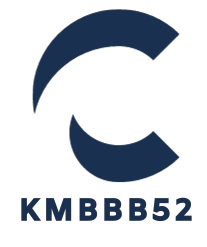Planning your first trip to Europe can be an exciting journey, but applying for a Schengen visa can sometimes feel like a hurdle. If you’re new to the Schengen visa process, understanding what to expect and how to prepare can help you sail through your appointment smoothly. Here are some essential tips to guide you through your Schengen visa appointment, from start to finish.
1. Understand the Basics of a Schengen Visa
The Schengen visa allows travelers to visit any of the 27 European countries in the Schengen Zone for up to 90 days within a 180-day period Schengen visa appointment. Whether you’re visiting family, exploring Europe for the first time, or traveling for business, the visa process is similar for everyone. Each country has specific requirements and procedures, so check the consulate of the country you plan to stay in the longest.
2. Start the Application Early
Appointments for Schengen visas can be hard to come by, especially during peak travel seasons. Start your application process at least three months before your planned travel date. This allows ample time for booking an appointment, preparing documents, and handling any unforeseen delays.
3. Choose the Correct Consulate
You should apply for the Schengen visa at the consulate of the country where you’ll spend the most time. If you’re visiting multiple countries and staying equal days in each, apply to the consulate of the country you’ll enter first. Confirm the consulate’s jurisdiction guidelines, as some may only accept applications based on where you live.
4. Book Your Appointment in Advance
Most consulates offer an online appointment booking system. During peak times, these appointments fill up quickly, so book as soon as possible. Double-check that your booking confirmation matches your intended visa application location, as changing locations after securing an appointment can be difficult.
5. Organize Your Documents Carefully
The document requirements can vary slightly by consulate, but the core documents you’ll need include:
- Completed visa application form
- Passport-sized photos
- Valid passport with at least two blank pages and validity of at least three months beyond your stay
- Proof of travel itinerary (flight bookings, accommodation reservations)
- Travel health insurance covering at least €30,000 for medical emergencies
- Proof of financial means (bank statements, salary slips)
- Cover letter detailing the purpose of your trip and itinerary
- Proof of employment or academic status
Consider using a checklist to keep everything organized and make sure each document meets the consulate’s requirements (e.g., currency, format).
6. Be On Time and Dress Professionally
Arriving late can result in rescheduling, so plan to be at the consulate at least 15–30 minutes before your appointment. Dress neatly, as first impressions matter. Although it’s not a formal interview, professional attire shows that you’re serious about your travel plans.
7. Prepare for Possible Interview Questions
You may be asked about the purpose of your trip, your travel history, your ties to your home country, or your financial means. Practice concise, honest answers that match the information on your application. It’s essential to show that you’re likely to return to your home country after your visit.
8. Bring Cash for Visa Fees
Visa fees vary slightly by consulate but generally range from €60 to €80 for adults, with reduced fees for children and some exceptions. Some consulates only accept cash, while others may accept cards, so check in advance.
9. Be Patient and Keep a Positive Attitude
The visa appointment process can sometimes feel stressful, with long waiting times or multiple queues. Keeping a calm and positive attitude will make the experience smoother, and it can also reflect well on you during any interactions with staff.
10. Check for Processing Times and Track Your Application
After your appointment, you’ll typically wait between 10 and 15 days for your visa. Some consulates offer online tracking, which can provide peace of mind during this period. Remember that processing times may vary depending on your nationality, application type, and consulate location.
Final Thoughts
Applying for a Schengen visa as a first-time traveler might seem complex, but with preparation, it’s manageable. Start early, stay organized, and approach the process with confidence. Once your visa is approved, you’ll have access to some of the most beautiful destinations in Europe, making all the preparation worthwhile!
